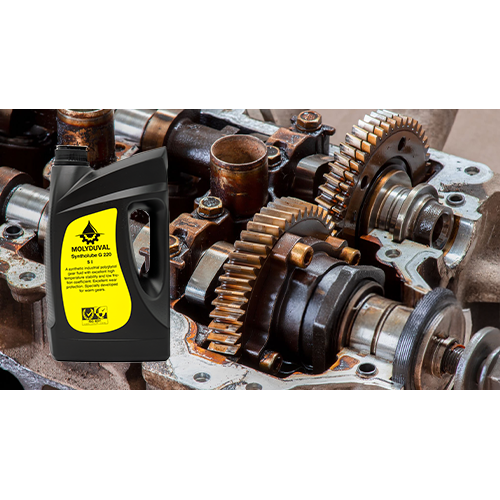Cart
Your shopping cart is empty! Which lubricant to chose PG or PAO?

Times Read: 263 Comments: 0
Which lubricant to choose PG or PAO?
Molyduval lubricants with PG (polyglycol) and PAO (poly-alpha-olefin) bases differ significantly in their chemical composition, lubrication properties, temperature performance, and sealing compatibility. Here’s a comparison:
PG (Polyglycol) Base lubricants (Molyduval Syntholube G 220 for example)
- Chemical Composition: Made from synthetic polyglycol oils, which offer excellent thermal stability and low friction characteristics.
- Lubrication Properties:
- High lubricity, particularly in applications involving sliding contacts.
- Low tendency for hydrocarbon varnish formation, making them ideal for clean operations.
- Temperature Performance:
- Good thermal stability up to +150°C to +200°C.
- Low pour point ensures good low-temperature performance (-30°C to -50°C).
- Sealing Properties:
- PG lubricants are polar, which makes them less compatible with some sealing materials (like elastomers) and certain paints.
- Tend to absorb water more readily than PAO greases, which may
- Applications: Often used in gearboxes, worm gears, and other applications requiring excellent sliding performance and minimal energy loss.
Molyduval Syntholube A 220 - PAO (Poly-Alpha-Olefin) Base oils
- Chemical Composition: Made from synthetic hydrocarbons, PAOs closely mimic mineral oils but offer improved performance.
- Lubrication Properties:
- Excellent film strength and stability under high loads.
- Generally lower friction coefficients than PG greases in rolling contact applications.
- Temperature Performance:
- Broad temperature range, typically -50°C to +150°C. Some formulations can exceed this range with proper thickeners.
- Lower evaporation rates at high temperatures compared to PG greases.
- Sealing Properties:
- Chemically inert and compatible with most sealing materials (e.g., nitrile, Viton, EPDM).
- Hydrophobic properties improve water resistance and sealing performance in wet environments.
- Applications: Widely used in bearings, automotive applications, and other environments requiring broad compatibility and balanced performance.
Comparison and Suitability
Property | PG oils | PAO oils |
| Lubrication Properties | Excellent for sliding contacts | Excellent for rolling contacts |
| Temperature Range | Wider low-temp range, slightly less heat-resistant | Excellent heat resistance and broad temp range |
| Water Resistance | Lower (hygroscopic) | Higher |
| Sealing Compatibility | Limited with certain materials | Very high |
| Applications | Gears, drives | Bearings, automotive, general |
Which is Better?
- For Lubrication Properties: Depends on the application:
- Sliding applications (e.g., gears): PG greases and oils have less friction- better lubrication.
- Rolling applications (e.g., bearings): PAO greases and oils.
- For Temperature Performance: Both perform well in their respective ranges, but PAOs have better seal compatibility and better low temperature properties.
- For Sealing Properties: PAO greases are better due to their inertness and water resistance.






